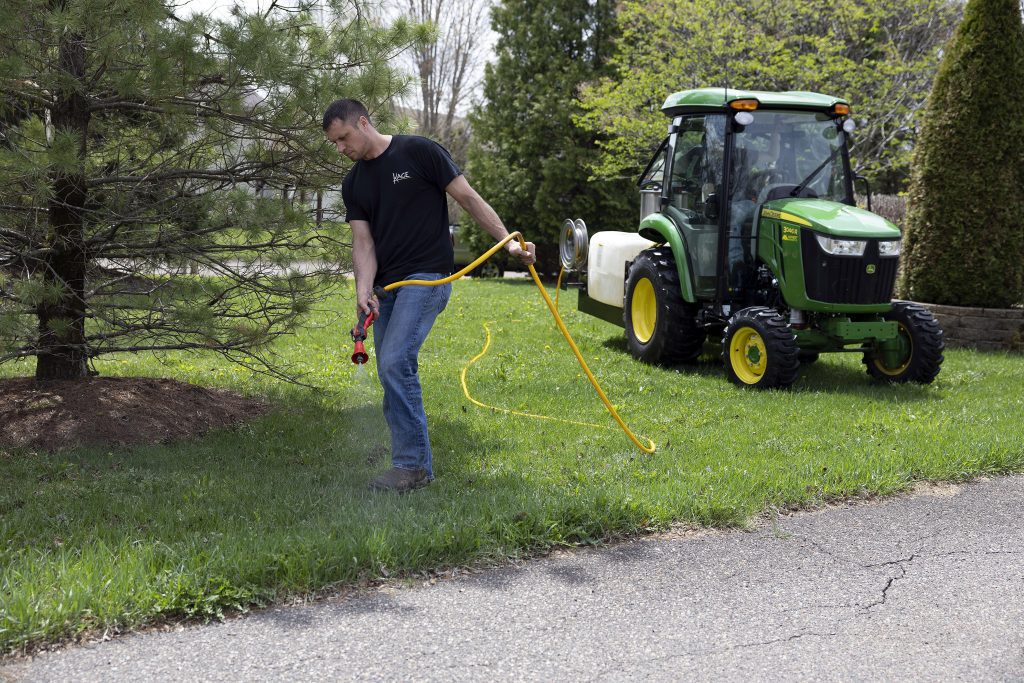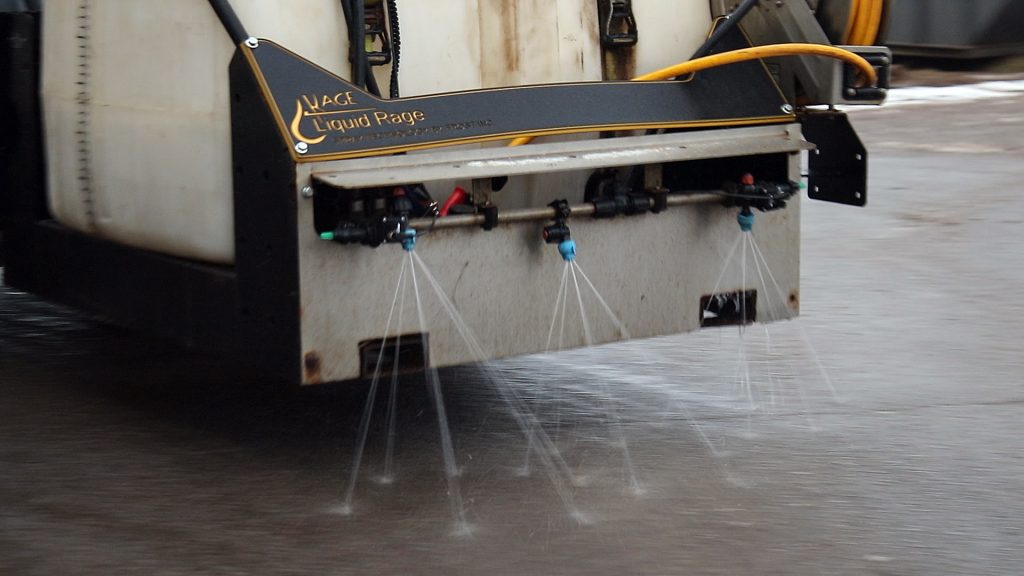When you’re preparing for spraying herbicides, pesticides, or liquid de-icers, one of the most common questions operators ask is: “How many acres will a 150 gallon 3 point sprayer cover?” Whether you’re managing farmland, sports turf, or large properties, knowing how far your equipment can go on a single tank is critical for efficiency and cost savings.
Let’s break down the math behind coverage, explore real-world variables that affect spray rates, and highlight how the KAGE LiquidRage 150-gallon 3-point boomless sprayer deliver smaximum performance and flexibility.
Understanding Sprayer Coverage Basics
The coverage of any sprayer depends on:
1. Tank size – In this case, 150 gallons.
2. Application rate – How many gallons per acre (GPA) are applied.
3. Spray pattern – Width and consistency of coverage.
4. Travel speed – How quickly you move across the ground.
The key formula is:
Acres Covered = Tank Capacity ÷ Application Rate (GPA)
Example: How Far Will 150 Gallons Go?
Application rates vary widely depending on the crop, product, and conditions. Here are some typical scenarios:
-
10 GPA (light application)
-
150 gallons ÷ 10 GPA = 15 acres covered
-
-
20 GPA (medium application)
-
150 gallons ÷ 20 GPA = 7.5 acres covered
-
-
30 GPA (heavy application)
-
150 gallons ÷ 30 GPA = 5 acres covered
-
This means your 150-gallon sprayer will typically cover 5–15 acres per tank depending on your target rate.
Why Application Rate Matters
If you’re spraying herbicides, you may only need 10–15 GPA, maximizing acreage per fill. For fungicides, foliar fertilizers, or ice control liquids, you may require 20–30 GPA to ensure proper coverage and effectiveness.
That’s why many operators prefer a 150-gallon 3-point sprayer—it strikes the balance between manageable size and versatile coverage.
Boom vs. Boomless Sprayers
When considering a 150-gallon sprayer, you’ll also need to decide between a boom sprayer or a boomless sprayer setup. Both have their advantages:
150 Gallon 3 Point Sprayer with Boom
-
Provides precise spray patterns.
-
Reduces overlap and chemical waste.
-
Best for row crops, lawns, and turf where uniform coverage is essential.
150 Gallon 3 Point Boomless Sprayer
-
Uses high-pressure nozzles to broadcast spray without a boom.
-
Ideal for uneven terrain, pastures, and areas with trees, fences, or obstacles.
-
The LiquidRage covers wide swaths (up to 30+ feet) without risk of damaging a boom.
Comparison Chart: Boom vs. Boomless Sprayers
| Feature / Use Case | 150 Gallon 3 Point Sprayer (Boom) | 150 Gallon 3 Point Boomless Sprayer |
|---|---|---|
| Spray Pattern | Even, precise coverage | Wide broadcast spray |
| Best for | Row crops, turf, lawns, sports fields | Pastures, rough terrain, tree lines, obstacles |
| Coverage Width | 10–20 feet (depending on boom size) | 5–30 feet (depending on nozzle setup) |
| Efficiency | Minimizes chemical overlap | Faster coverage with fewer passes |
| Durability in Rough Ground | Risk of boom damage on obstacles | No boom to damage—better for rugged areas |
| Typical Acreage Per Tank (150 gal) | 5–15 acres (based on GPA) | 5–15 acres (based on GPA) |
| KAGE LiquidRage Options | No | Yes – boomless broadcast nozzles option |
This comparison shows that both sprayer types cover a similar number of acres per tank, but their efficiency and application precision vary depending on your needs.
The KAGE LiquidRage Advantage
Not all 150-gallon sprayers are created equal. The KAGE LiquidRage sprayer is designed for professionals who demand durability, ease of use, and adaptability.
Key Features:
-
Heavy-duty frame – Built to last under rugged field conditions.
-
3-point hitch and skid steer compatibility – Easily attaches to tractors, compact tractors, skid steers and utility machines.
-
Boomless – Switch between narrow, wide and directional coverage depending on your needs.
-
Reliable pump system – Ensures consistent spray pressure and even distribution.
-
Adjustable nozzles – Control droplet size and pattern for maximum efficiency.
Whether you’re applying herbicides to pasture, de-icing large lots, or managing sports turf, the LiquidRage is engineered to deliver consistent results.
Tips for Maximizing Coverage
To get the most out of your 150-gallon 3-point boomless sprayer, keep these best practices in mind:
1. Calibrate your sprayer regularly – Ensures you’re applying the correct GPA.
2. Adjust speed to conditions – Faster speeds reduce application rates, while slower speeds increase them.
3. Use the right nozzle for the job – Fine droplets for fungicides, coarse for herbicides or de-icing.
4. Plan your spray path – Minimize overlap and avoid skips.
5. Maintain equipment – Check filters, pumps, and hoses before each use.
These practices not only stretch your acreage per tank but also improve effectiveness and reduce waste.
Final Answer: How Many Acres Will It Cover?
A 150 gallon sprayer will generally cover between 5–15 acres per tank, depending on your application rate. At lighter rates (10 GPA), you’ll stretch to around 15 acres, while at heavier rates (30 GPA), you’ll cover closer to 5 acres.
Choosing a high-quality sprayer like the KAGE LiquidRage 150-gallon 3-point sprayer ensures that every gallon is used efficiently, giving you consistent results across your operation.
Why Choose the KAGE LiquidRage?
When it comes to spraying equipment, reliability and versatility make all the difference. The KAGE LiquidRage isn’t just a sprayer—it’s a solution that adapts to your land, your application, and your workload.
-
Covers 5–15 acres per fill.
-
Available in boomless options.
-
Built tough for agricultural, turf, and ice control use.
-
Backed by KAGE’s reputation for innovative, professional-grade equipment.
If you’re looking for a dependable 150-gallon 3-point sprayer that can maximize your productivity, the KAGE LiquidRage is built to perform season after season.
Bottom line: A 150-gallon 3-point boomless sprayer or boom sprayer like the KAGE LiquidRage will cover 5–15 acres per tank, depending on your application rate, making it one of the most versatile and efficient solutions for farms, turf, and ice control.






Recent Comments